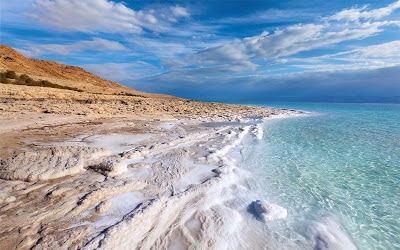So what’s gone wrong with salt?
Table salt is an artificial form of sodium chloride created by taking either natural salt or crude oil flake leftovers (so yes, I did say crude oil – yummy!) and cooking it at 1200° F. This strips natural salt it of all of its naturally occurring minerals that we need in our diet.
Of particular concern, natural iodine is lost when we manufacture salt. Without iodine in our diet, the thyroid is severely harmed, leading to growth and metabolism issues. Because of this, the chemical-based salt industry began to add synthetic forms of iodine, such as the very toxic potassium iodide, to their products.
Other synthetic chemicals are added such as anti-caking agents and dextrose to stabilize it. Dextrose turns it purple so then it has to be bleached!
So worse than being unhealthy, table salt is actually toxic.
So perhaps it might seem that low sodium foods are a good idea then. Less table salt….yes.…but often instead other chemical flavor enhancers are added instead such as MSG.
Sea salt, on the other hand, is naturally dried in the sun and nutrients are preserved. It contains many alkaline minerals that help keep us hydrated, balance our sodium-potassium ratios, as well as fill the body with powerful electrolytes. They also contain all of the trace elements needed for proper immune, thyroid and adrenal function. Real forms of salt also boost the creation of digestive enzymes and juices that allow us to extract and assimilate other vitamins and nutrients from the food we eat. I could go on to list more benefits.
But wait, you say, doesn’t high salt intake result in hypertension (high blood pressure)? Well actually many recent studies are refuting that this is the case and indicate that a better way to balance your blood pressure is by having good overall mineral balance including calcium and magnesium.
So get back to salting your foods with natural sea salt. It enhances the flavor and does your body good!
Ways to increase good quality salt in your life:
- Avoid processed foods or eating out, since you will consume large amounts of processed table salt.
- Add sea salt to taste and don’t worry about eating too much.
- Drink 1/2 tsp of quality salt in a quart of water daily to help raise your electrolyte and trace mineral levels.
- Soak in a relaxing bath with added magnesium and sea salt (2 tablespoons of each).
- For skin issues like eczema or psoriasis make a poultice of real salt and water (or honey) and apply to affected areas.
- Make a scrub with finely powdered sea salt and natural oil (like coconut or olive) to use as an exfoliant.


 RSS Feed
RSS Feed
